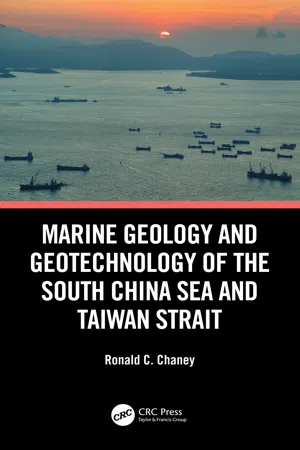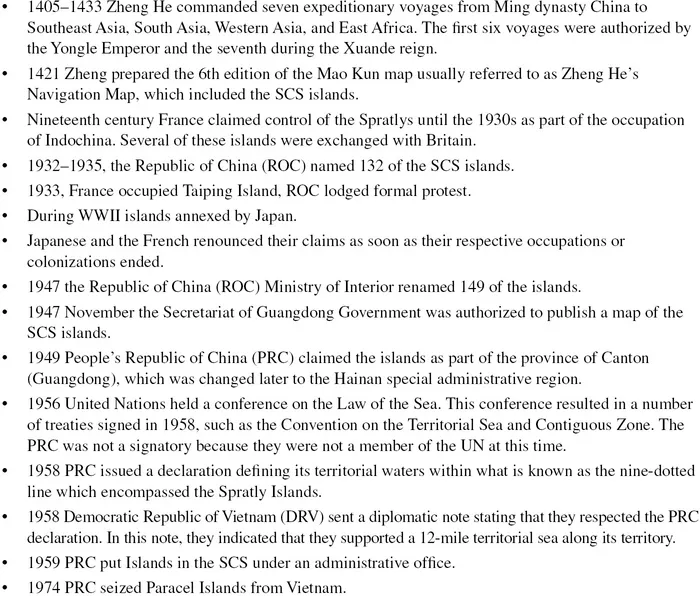
Marine Geology and Geotechnology of the South China Sea and Taiwan Strait
- 246 pages
- English
- ePUB (mobile friendly)
- Available on iOS & Android
Marine Geology and Geotechnology of the South China Sea and Taiwan Strait
About This Book
The waters and rich resources of the South China Sea are claimed by seven different countries, and it is estimated that approximately 40% of the world's trade moves through the area. Marine Geology and Geotechnology of the South China Sea and Taiwan Strait examines the physiology, geology, and potential development of this important portion of the western Pacific Ocean's largest marginal sea. The book covers multiple oceanographic topics, and further discusses topography, sedimentation, wave generation, and hazards such as earthquakes, storm surges, and tsunamis. In addition, it explains the engineering issues and design considerations involved regarding a potential Taiwan Strait Crossing, as well as the development of near-shore communities.
Features:
-
- Examines seabed material, such as clays, calcareous, siliceous, and various other organic sediments
-
- Presents different potential routing strategies for sea crossings using tunnels, bridges, or a combination of both
-
- Provides bridge design recommendations considering aesthetics, seismic and wind issues, potential vessel collisions, and more
-
- Includes a historical timeline and useful maps regarding the political complexity of the area and the various territorial claims made by different nations
Marine Geology and Geotechnology of the South China Sea and Taiwan Strait serves as a valuable resource for geotechnical engineers, marine geologists, civil engineers, and professionals concerned with the region.
Frequently asked questions
Information
Part I
Politics and Resources
1Introduction: Geography, History, and Politics
1.1GEOGRAPHY

1.2POLITICAL DIVISIONS AND TERRITORIAL CLAIMS
Political Timeline of the SCS




1.3RESOURCES
Table of contents
- Cover
- Half Title
- Title Page
- Copyright Page
- Dedication
- Table of Contents
- Preface
- Acknowledgments
- Author
- Part I Politics and Resources
- Part II Tectonics/Geology
- Part III Oceanographic Factors
- Part IV Terrestrial and Seabed Sediments
- Part V Civil Engineering Development
- Index